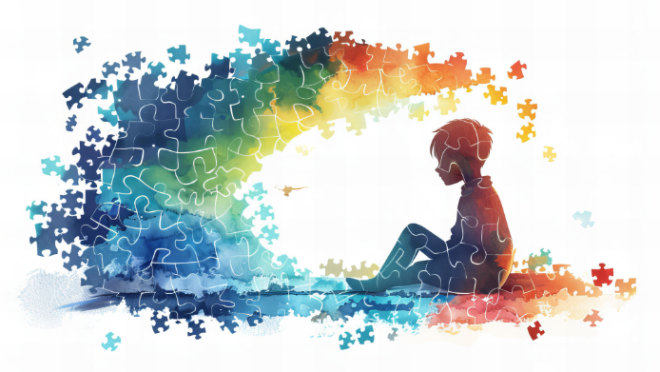Beyond the stereotypes: Understanding Autism Spectrum Disorder
Beyond the stereotypes: Understanding Autism Spectrum Disorder

In Southeast Asia, an estimated 1 in 160 children has Autism Spectrum Disorder (ASD). Despite this, awareness and understanding of autism remain significantly limited in this region, Bangladesh being no exception.
The myths and misunderstandings cloud public perception and prevent autistic individuals from receiving the support they need.
Today, as we observe Mental Health Awareness Month, let’s separate fact from fiction regarding autism to promote acceptance and build a more inclusive society.
Myth: Autism is a disease that needs a “cure”.
Fact: Autism is a neurodevelopmental difference, not an illness.
Autistic individuals have brains that process information differently. While some may need support in certain areas, autism itself is not a disease to be cured. Many advocates emphasise acceptance over “fixing” neurodivergent individuals.
Myth: All autistic people are either geniuses or severely disabled.
Fact: Autism is a spectrum with vast variations.
Media often portrays autistic people as either savants (meaning they have a special skill) or completely nonverbal. In reality, abilities and challenges vary widely. Some excel in specific areas, while others need daily support—but most are somewhere in between.
Myth: Bad parenting causes autism.
Fact: Autism is biological, not caused by upbringing.
Decades ago, the harmful “refrigerator mother” myth falsely blamed parents, suggesting that a lack of warmth and bonding from mothers caused autism. Today, science confirms that genetics and brain development play key roles, and no evidence supports a link between parenting style and autism.
Myth: Autistic people lack empathy.
Fact: They may express empathy differently.
While some struggle with social cues, many autistic individuals feel emotions deeply—sometimes more intensely than neurotypical people. Their way of showing care (e.g., through actions rather than words) is just as valid.
Myth: Vaccines cause autism.
Fact: No credible science supports this claim.
The myth linking vaccines to autism originated from a fraudulent 1998 study by Dr Andrew Wakefield, which was later retracted. Despite previous inconclusive studies, this one gained significant media attention, but over 25 major studies have since confirmed no link between vaccines and autism. Vaccines save lives and avoiding them puts individuals at risk of preventable diseases.
Myth: Autistic people do not want company.
Fact: Many crave connections but struggle socially.
Social interactions can be overwhelming due to sensory or communication differences. With understanding peers and inclusive environments, autistic individuals often form meaningful relationships.
Autism often comes with differences in communication styles, sensory processing, and social cues. For example, someone on the autism spectrum might avoid eye contact, interpret language literally, or struggle with small talk—not because they’re uninterested in others, but because these interactions can be confusing, draining, or overwhelming.
However, when autistic individuals are supported in inclusive, understanding environments—where communication differences are respected and sensory needs are accommodated—they can and often do build deep, meaningful, and lasting relationships
Myth: Only boys get autism.
Fact: Autism can occur in both genders.
Girls are 4.2 times less likely to be diagnosed with autism than boys, but it still occurs. This is often due to girls masking their symptoms more effectively, which leads to misdiagnosis. Additionally, previous diagnoses were based on male behaviours, contributing to the stereotype that girls don’t have autism.
Myth: Autistic people are violent.
Fact: Autistic individuals are often more likely to be victims of violence instead.
While some autistic individuals may exhibit aggressive behaviours due to sensory overload or emotional distress, this is not an indication of inherent violence. Research shows that when violent tendencies occur in those with autism, they are often linked to comorbid psychiatric conditions and histories of neglect or abuse. Overall, studies indicate that autistic people are no more violent than others and are, in fact, more likely to be victims of violence.
How to support the autistic community
Supporting the autistic community starts with listening to autistic people. Their experiences matter the most, so let them share their stories. Inclusion is key—whether in schools, workplaces, or public spaces, everyone deserves to feel welcome and valued. It’s also important to avoid stereotypes because no two autistic people are the same.
Dispelling myths is the first step toward acceptance. By replacing misinformation with facts, we can create a world where autistic individuals are accepted for who they are, not what others expect them to be.


